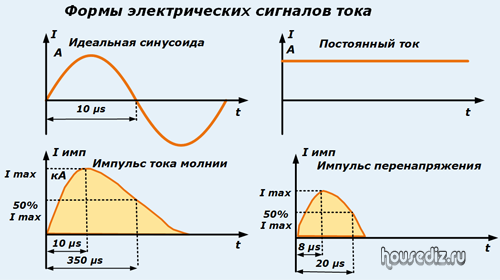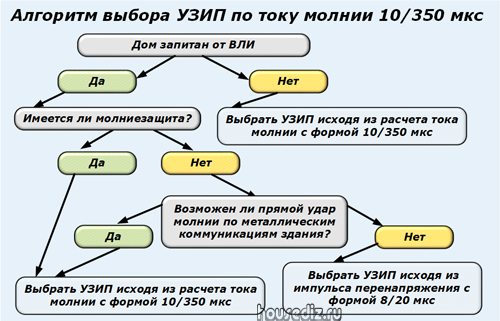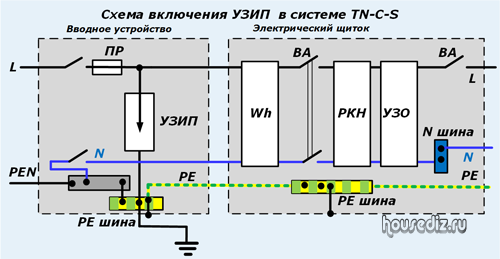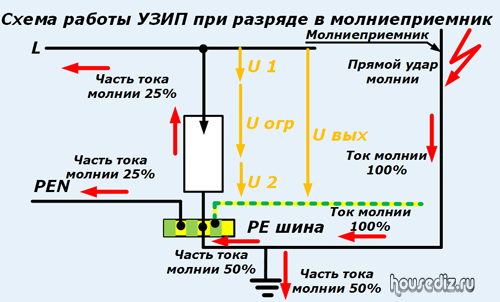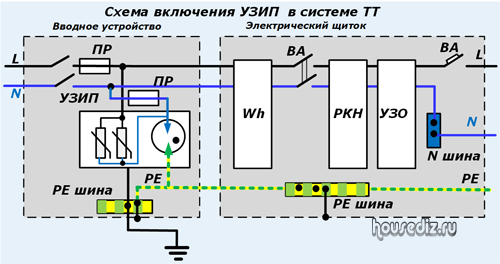Sections of the site
Editor's Choice:
- How to unlock ariston washing machine
- Pros and cons of LED lighting
- Pulse relay: device and connection
- How to calculate the illumination of a room with LED lamps?
- Plastic box - do-it-yourself aesthetic view of electrical wiring
- Electricity consumption of a warm floor: electric and film
- Installing a pump in a well: how to properly install pumping equipment
- Electrician Toolkit Overview
- How to choose a water heater: the most complete list of evaluation criteria
- 1 acoustics on the example of Sven SPS-860 and Realtek ALC889 codec
Advertising
| How to choose surge protection (SPD) for a private house and cottage |
|
Any household electrical appliances that work in home wiring are created by manufacturers to be powered by a harmonic sine wave signal with a voltage of 220 or 380 volts. Sophisticated electronic technology uses direct current rectified by special blocks. When the shape and amplitude of the supply voltage changes, it greatly affects the quality of work of household consumers, reducing their resource. Serious attention must be paid to the protection of household appliances:
What current pulses can occur in a household home networkThe nature of the current flow through the equipment is taken as the basis for the design of electrical appliances and is shown in the picture below.
The characteristics shown in the lower graphs are of a general nature. They change on a case by case basis. However, it should be immediately noted that the lightning impulse is much larger in magnitude, and 17 times longer in time (350/20=17). The power of lightning is much higher than the impulse of a conventional overvoltage of the network, it has increased destructive abilities compared to it. Therefore, to eliminate the aftereffects of lightning, specialized impulse-type protections are used. Let's boil it down to four points:
Let's analyze it using the example shown in the picture below.
The presence of a dielectric layer on the conductive elements of an overhead line reduces the impact of a lightning discharge, affects the design of an operating SPD and its connection scheme. When the house is powered from VLI, a grounding system is created according to the TN-C-S scheme. SPD is mounted between phase conductors and PEN. The place where PEN is split into PE and N wires at a distance of 30 meters from the building requires additional protection. The presence of mounted external lightning protection on the house, the supply of metal communications of engineering systems affect the electrical safety of the building, the choice and connection scheme of the SPD.
Option 1Conditions
SolutionIn such a situation, the probability of a direct lightning strike to the building is sharply reduced:
Therefore, it is quite sufficient to protect against overvoltage impulses with a shape of 8/20 µs for current. An SPD with a combined protection class 1 + 2 + 3 in a single housing of the brand DS131VGS-230 is quite suitable. Moreover, its protective function to eliminate lightning current pulses of the form 10/350 μs with an amplitude of up to 12.5 kA is unlikely to be used. The range of current from overvoltage impulses can be selected from the range of 5÷20 kA, taking into account the period of thunderstorm days. It is easier to stop at the maximum value. Option 2ConditionsElectricity is supplied through VLI. Building:
SolutionCompared to the previous case, a lightning discharge of lightning through a pipeline with a power of up to 100 kA is possible here. This current inside the pipe will branch out to both ends of 50 kA. From our side of the house, this part will be divided by 25 kA into the ground loop and the building. The PEN conductor will take its share of 12.5 kA, and the remaining half of the impulse of the same strength through the SPD will penetrate into the phase conductor. Therefore, it must be suppressed. It is quite possible to choose the same SPD model as before, but its ability to protect against a lightning impulse with a shape of 10/350 µs and a swing of up to 12.5 kA will be absolutely necessary. Option 3ConditionsElectricity is supplied through VLI. In a buiding:
SolutionA lightning discharge of 100 kA enters the lightning rod, is divided into two streams of 50 kA each into the grounding device and the electrical circuit of the building.
Option 4ConditionsElectricity is supplied through VLI. At the building:
SolutionA lightning discharge of 100 kA after the lightning rod in two streams of 50 kA each diverges to the ground loop and the electrical circuit of the input device. The second stream is also divided equally: 25 kA flows through the water supply pipes, and the next 25 are also divided by 12.5 kA into the PEN conductor and the phase conductor through the SPD. It can be chosen the same design as in the second option. Features of the choice of SPD when powered by VLIIn the four examples analyzed, VLI with SIP was taken as the basis for the power supply of the building. They have a zero break, and, therefore, the appearance of a linear voltage of 380 instead of a phase voltage is unlikely. Therefore, the choice of SPD can be limited by the maximum voltage of the network. Given the workloads in the four options for SPDs considered, it is quite possible to mount the latter in metal cabinets inside the house. Taking into account the small dimensions of the building, it is permissible to install one SPD between the potentials of the phase and the PEN conductor. Option 5ConditionElectricity is supplied to the building via overhead power lines with bare wires. SolutionIn such a situation, there is a high probability of a lightning discharge into the wires of the overhead line, and a TT grounding system scheme is used near the house.
When connected to open wires of overhead lines, the design of the branch affects the electrical safety of the house. Its implementation is possible:
With an air branch, less risks are provided by individually isolated SIP wires with a cross section of 16 mm kV and the creation of a gap relative to the phase and neutral conductors. In them, a direct lightning strike is practically unrealistic, but it can get into the cutting area near the insulators at the input. Then 50% of the strength of the lightning discharge will appear on the phase. This case must be excluded:
Without complex fulfillment of these conditions, it will be necessary to mount an SPD for 50 kA 10/350 µs, and if fulfilled, the lightning current into the open phase conductor with a power of 100 kA will be divided into two flows, of which 50 kA will go towards the building to the input pole. When he stands last on the line, then the entire discharge will enter the house, and if the overhead line is laid further, it will be divided into our building and go to others. These conditions are decisive when choosing an SPD according to the strength of the lightning discharge. On an overhead power line with open wires, a zero break is likely, which requires the choice of an SPD for a voltage of up to 0.4 kV, and not 220 volts. When installing an SPD, one should take into account the manufacturer's factory recommendations, set out in the technical characteristics for connection diagrams in different grounding systems, and their features. Otherwise, more harm than good is possible from the use of protection. The role of the fuse in SPD protectionThe flow of a thunderstorm usually occurs with a heavy wind, which can break the PEN conductor of the overhead line during or before a lightning strike. A phase current will flow through the working zero. When a lightning strikes through an open phase wire, an SPD works out for us, through which an impulse from a thunderstorm and a current accompanying a PEN break will flow, along the chain: fuse, arrester, PE bus and ground loop. All these elements have a certain electrical resistance, which reduces the amount of current flowing. It can be calculated, determined by Ohm's law, the value of the follow current, compared with the characteristics of the SPD. If they allow operation at a larger value, then the fuse can be omitted. The Electromir company explains with its video why it is necessary to install an SPD in any house. (10 votes, average: 5 out of 5) |
New
- Rye malt and what can be done with it?
- How to make fortified wine at home
- How to speed up the fermentation process of homemade wine
- How to make wine yeast at home, instructions for use
- Unfiltered beer - a source of good mood and nutrients Wheat or barley beer
- Intoxicated sweets: seven recipes for berry tinctures
- Dessert wines: names
- Diesel heating boilers for a private house
- Analysis "in a bad society" Korolenko In a bad society reduction
- Fuel consumption of diesel heating boiler

